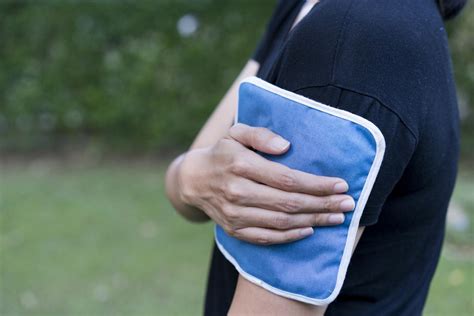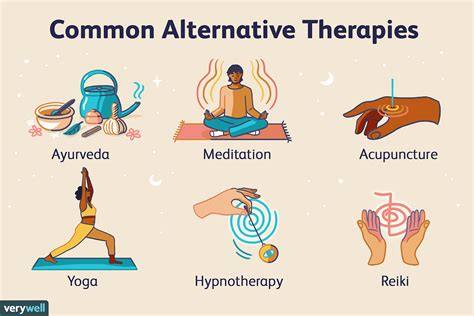Intro
Discover 5 effective ways to treat bursitis, a painful joint condition, using physical therapy, medication, and home remedies, alleviating inflammation and reducing swelling, for optimal bursitis relief and management.
Bursitis is a common condition that affects millions of people worldwide, causing pain, swelling, and limited mobility in the affected joints. It occurs when the bursae, small fluid-filled sacs that cushion bones, tendons, and muscles, become inflamed. This inflammation can be caused by a variety of factors, including repetitive motion, direct blows to the joint, or underlying medical conditions such as arthritis. Understanding the causes and symptoms of bursitis is crucial in developing effective treatment strategies.
The symptoms of bursitis can vary depending on the location and severity of the condition. Common symptoms include pain and tenderness in the affected area, swelling and redness, limited mobility, and stiffness. In some cases, the skin over the affected bursa may be warm to the touch or appear red and inflamed. If left untreated, bursitis can lead to further complications, such as chronic pain, limited mobility, and increased risk of infection.
Fortunately, there are several effective ways to treat bursitis, ranging from conservative management techniques to more invasive procedures. The goal of treatment is to reduce inflammation, alleviate pain, and restore mobility to the affected joint. In this article, we will explore five ways to treat bursitis, including rest, ice, compression, and elevation (RICE), physical therapy, medication, alternative therapies, and surgery. By understanding these treatment options, individuals can make informed decisions about their care and work towards achieving optimal recovery.
Treatment Options for Bursitis

Treatment for bursitis depends on the severity of the condition, the location of the affected bursa, and the individual's overall health. In mild cases, conservative management techniques may be sufficient to alleviate symptoms and promote recovery. However, in more severe cases, medical intervention may be necessary to reduce inflammation, alleviate pain, and restore mobility.
Conservative Management Techniques
Conservative management techniques are often the first line of treatment for bursitis. These techniques are designed to reduce inflammation, alleviate pain, and promote recovery. Some common conservative management techniques include rest, ice, compression, and elevation (RICE), physical therapy, and medication.Rest, Ice, Compression, and Elevation (RICE)

Rest, ice, compression, and elevation (RICE) is a common treatment approach for bursitis. This technique involves:
- Resting the affected joint to avoid further irritation
- Applying ice to reduce inflammation and alleviate pain
- Compressing the affected area to reduce swelling
- Elevating the affected joint above the level of the heart to reduce swelling and promote blood flow
By following the RICE principle, individuals can reduce inflammation, alleviate pain, and promote recovery. It is essential to note that RICE should be used in conjunction with other treatment approaches, such as physical therapy and medication, for optimal results.
Physical Therapy for Bursitis

Physical therapy is an essential component of bursitis treatment. A physical therapist can help individuals develop a personalized exercise program to strengthen the surrounding muscles, improve mobility, and reduce pain. Some common physical therapy techniques for bursitis include:
- Range of motion exercises to improve mobility and reduce stiffness
- Strengthening exercises to support the affected joint
- Modalities such as heat, cold, or ultrasound to reduce pain and inflammation
By incorporating physical therapy into their treatment plan, individuals can improve their overall function, reduce pain, and promote recovery.
Medication for Bursitis
Medication is often used to reduce inflammation, alleviate pain, and promote recovery in bursitis. Some common medications used to treat bursitis include: * Nonsteroidal anti-inflammatory drugs (NSAIDs) such as ibuprofen or naproxen * Corticosteroid injections to reduce inflammation and alleviate pain * Antibiotics to treat underlying infectionsIt is essential to note that medication should be used under the guidance of a healthcare professional, as it can have potential side effects and interact with other medications.
Alternative Therapies for Bursitis

Alternative therapies can be used in conjunction with conventional treatment approaches to promote recovery and alleviate symptoms. Some common alternative therapies for bursitis include:
- Acupuncture to reduce pain and inflammation
- Massage therapy to improve mobility and reduce muscle tension
- Herbal supplements such as turmeric or ginger to reduce inflammation
While alternative therapies may be beneficial, it is essential to consult with a healthcare professional before incorporating them into your treatment plan.
Surgical Intervention for Bursitis

In severe cases of bursitis, surgical intervention may be necessary to remove the inflamed bursa or repair damaged tendons or muscles. Surgery is typically reserved for cases where conservative management techniques have failed to alleviate symptoms or promote recovery.
Some common surgical procedures for bursitis include:
- Bursectomy, which involves removing the inflamed bursa
- Tendon repair, which involves repairing damaged tendons
- Muscle repair, which involves repairing damaged muscles
It is essential to note that surgery should be used as a last resort, as it can have potential risks and complications.
Preventing Bursitis
Preventing bursitis is essential to avoid the pain, swelling, and limited mobility associated with the condition. Some common prevention strategies include: * Maintaining a healthy weight to reduce pressure on the joints * Avoiding repetitive motion or direct blows to the joint * Wearing protective gear such as knee pads or elbow pads * Strengthening the surrounding muscles through exerciseBy incorporating these prevention strategies into your daily routine, you can reduce your risk of developing bursitis and maintain optimal joint health.
What are the symptoms of bursitis?
+The symptoms of bursitis include pain and tenderness in the affected area, swelling and redness, limited mobility, and stiffness.
How is bursitis diagnosed?
+Bursitis is typically diagnosed through a combination of physical examination, medical history, and imaging tests such as X-rays or MRI.
Can bursitis be prevented?
+Yes, bursitis can be prevented by maintaining a healthy weight, avoiding repetitive motion or direct blows to the joint, wearing protective gear, and strengthening the surrounding muscles through exercise.
What are the treatment options for bursitis?
+The treatment options for bursitis include rest, ice, compression, and elevation (RICE), physical therapy, medication, alternative therapies, and surgery.
How long does it take to recover from bursitis?
+The recovery time for bursitis varies depending on the severity of the condition and the effectiveness of treatment. In general, it can take several weeks to several months to fully recover from bursitis.
In conclusion, bursitis is a common condition that can cause significant pain, swelling, and limited mobility. Fortunately, there are several effective treatment options available, ranging from conservative management techniques to surgical intervention. By understanding the causes and symptoms of bursitis, as well as the available treatment options, individuals can make informed decisions about their care and work towards achieving optimal recovery. We invite you to share your experiences with bursitis, ask questions, or provide feedback on this article. Your input is valuable to us, and we look forward to hearing from you.
